The Article
Gravity One From Origin Live
20th August 2020

Looking to removing noise and vibration from your turntable’s platter and the record itself, Origin Live introduce an intriguing accessory called the Gravity One
Before we get to the thing itself, let me tell you what this product is not.
It’s not a Weight. It’s not a Record Weight. It’s not a stabiliser. It’s not a clamp.
Even Origin Live calls this thing a Record Weight. It isn’t.
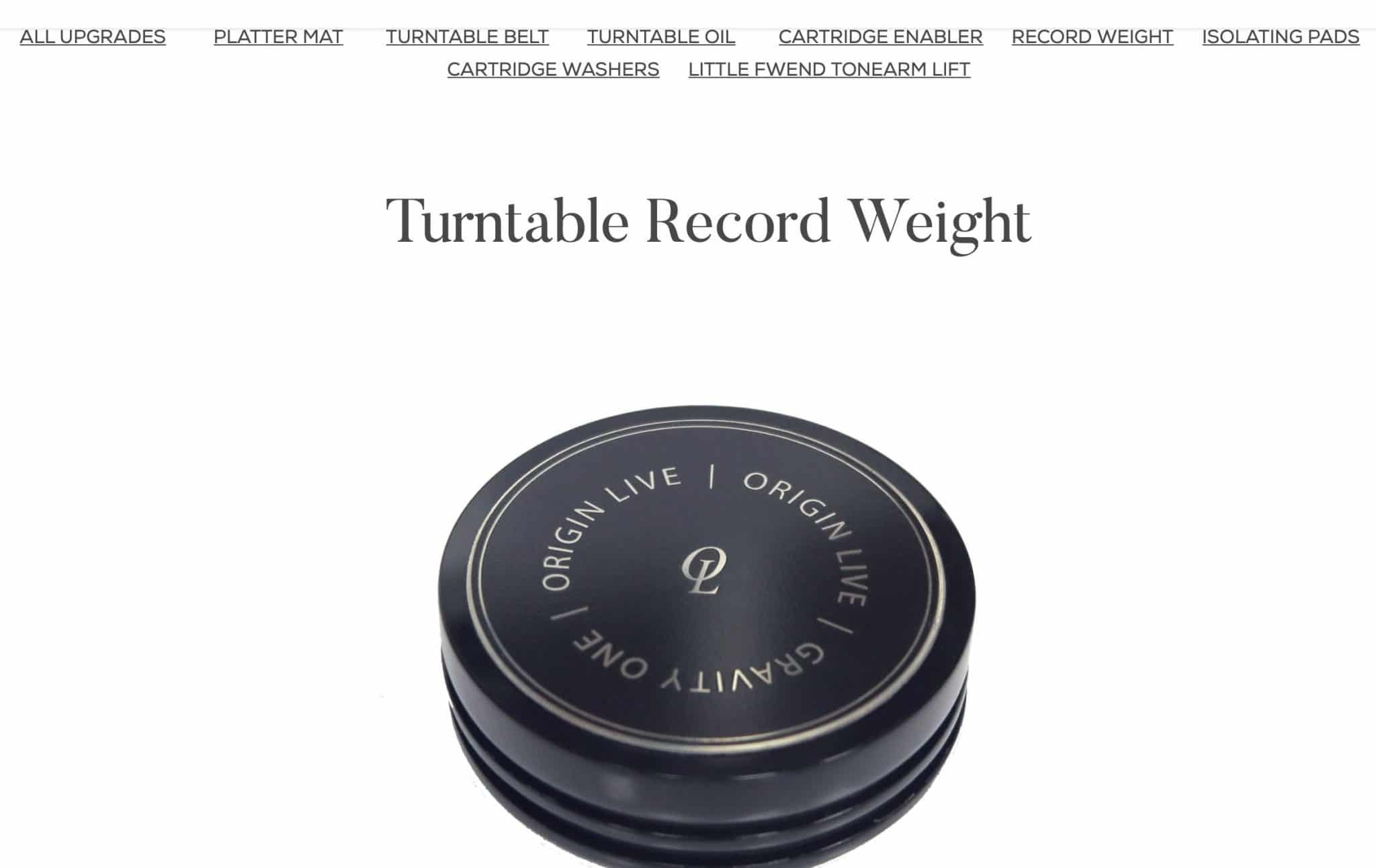
Calling this product a Record Weight doesn’t describe what this accessory does or how it does it. It’s a name that will be familiar to the beginner or the wary and may help Origin Live’s Google Analytics but that’s it.
It has weight sure, otherwise it would float out of the window but so little that it doesn’t perform like a classic Stabiliser.
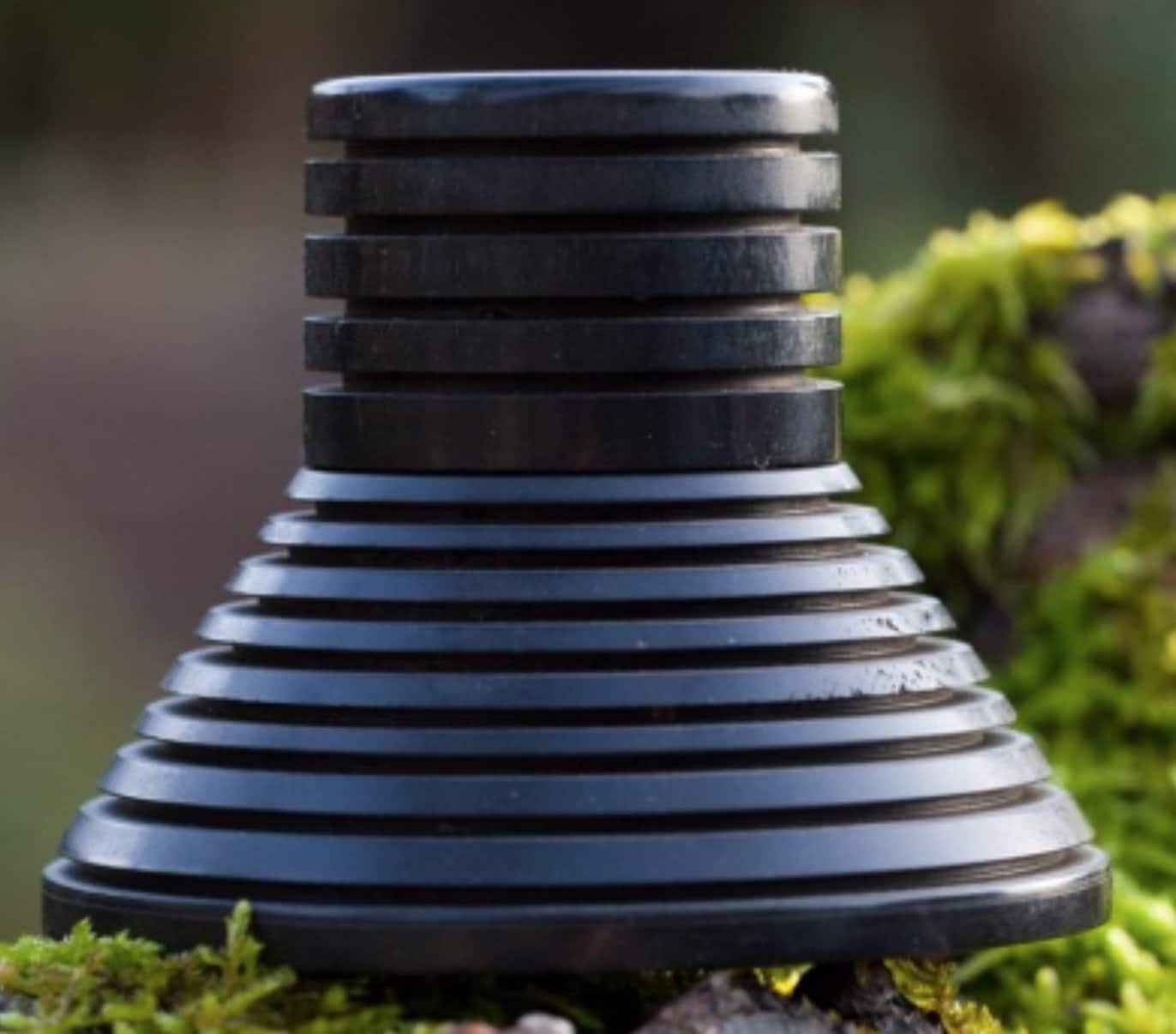
In fact, the Gravity One – its real name – is the result of inspiration. It’s inspired by the Shun Mook. Described as a “record clamp”, the Shun Mook is made from Ebony root. Not Ebony. Ebony root. It currently sells in the UK and elsewhere for an eye-watering £3,750.
The guys at Origin Live were hanging round their room at a relatively recent hi-fi show and this piece of Japanese exotica was nearby. So they took a little look, light bulbs flashed above heads, the thought of doing an affordable version was discussed and behold, the Gravity One was born.
Something like that, anyway.
The idea behind the Gravity One is that this unit is all about ridding the platter and record of noise and vibration. Records hold vibrations too, you know. Not just the platter. Vibration is fine and useful if treated properly. That is, if you encourage the vibration to peter out to zero, then vibration is OK. Vibration is also useful, to an extent, because it holds the spacious, reverb-like bits of music.
Some vibration is good, too much is not so good because it turns into high-frequency noise. It’s a bit like damping your room. You want to damp it just enough to remove damaging echoes and harmful bouncing frequencies, dead spaces and the like but too much kills the sound stone dead and the music sounds like its performing in a padded cell.
Like every other part of a turntable, it’s a balancing act. Get that balance right and you’re onto a winner. Get it wrong and the turntable will either sound dull or bright.
That’s why the Gravity One is unstable in nature. I mean physically. It’s a bit…wobbly. It encourages vibration to be targeted, then reduced and to fizzle out, lowering the overall noise floor.
This is also why the Gravity One isn’t heavy. Too heavy a weight will kill dynamics. I’ve tested that effect many times myself on various Stabilisers on different turntable designs.
Also, the issue with many clamps, those that hug the spindle, is that they couple themselves directly to the vibration from the bearing below. Which then spreads to the platter and the record.
The actual construction method of the Gravity One is on the restricted list. Origin Live is keeping schtum but there’s some Cartridge Enabler-like material within, low-density wood, there’s some acrylic screws and those screws are not tightened too much. There’s ‘give’ in there.
As I say, the actual Gravity One is not solid during use. If you firmly hold the top bit, you can twist the bottom bit a tad. Hence, the Gravity One also seems to be built from discs of a sort.
So that’s what it is and how it is but what does it sound like?
SOUND QUALITY
I started with Joe Harnell and his LP, Moving On!! Unusual because it resides on the Motown label. This is an easy-going, big band presentation full of organic instruments.
I first placed the Gravity One onto my high-end Origin Live Sovereign turntable to see how a top-of-the-range deck reacted.
The response was quite remarkable. Why? Well, my principle reference set up is – even though I say so myself – finely tuned with main components and ancillaries. I’ve spent serious time tweaking and adjusting my hi-fi to a point in which the system runs, I have to say, quite beautifully.
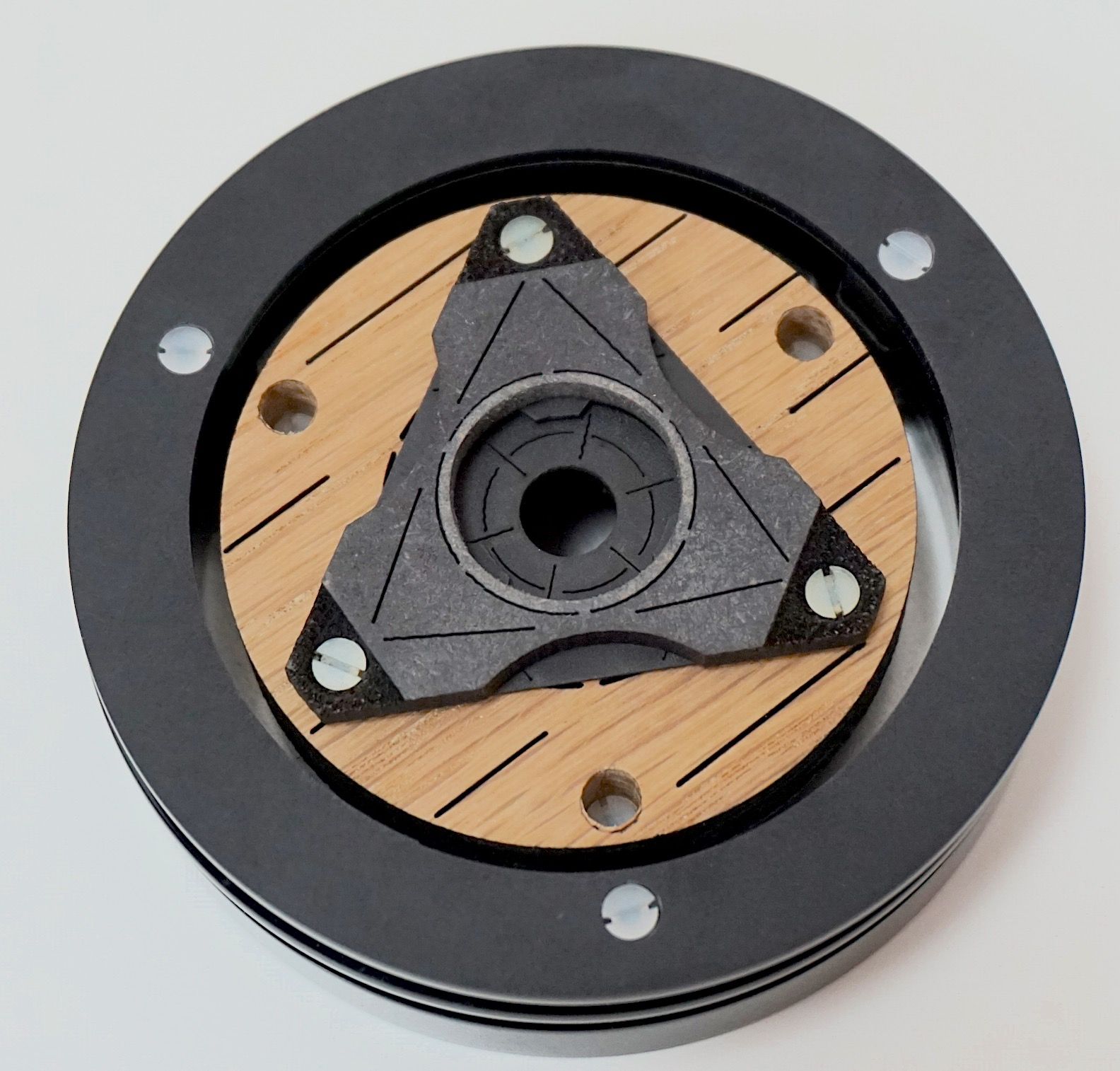
Then I added this Gravity One and the the sound improved. Just like that. Just to prove that, no matter how well I think your system is doing, there’s always something else out there that can improve matters. Accessories like this Gravity One never fail to amaze me.
So what’s happening sonically here? It’s all about control, really. Basically, if there are any and I mean any frequencies that are misbehaving and that includes those frequencies that are even slightly out of line, this accessory will correct the error. It will re-focus upper mids, it will add a tad more weight to the bass, it will de-noise the treble, adding clarity.
It had me throwing up my hands in exasperation, to be honest. In a pleasant way, I have to add. I was smiling when I did it but hey, there I was. Smug. And then this thing comes along and says, “OK, buster, just step to one side and let me show you a thing or two.”
So the prominent secondary percussion tambourine stepped back a tad from the sonic edge, where it normally lives and added both clarity but more detail to its presentation, bass sounded fuller and added a reverb tail and the piano provided more resonance.
I then shifted to Roxy Music’s Avalon, a very well produced LP offering balanced neutrality. Again, I thought that this LP was sorted in sonic terms. It sounded great as it was. Again, there were changes. Good ones. Now it sounded even better.
It’s interesting. The Gravity One removed any little areas of bass bloom here, midrange smearing there. Little errors. Lots of little errors were corrected. Errors that I didn’t even notice were there until they were gone. Not major problems. Not here, with my Sovereign, at any rate.
Yet the Gravity One tidied all of these things up so you suddenly found lots of little details popping out of the woodwork. A vocal reverb that wasn’t there before. Brief but noticeable. A new and quick cymbal tap or two, just a second’s worth but enough to catch the ear. A slight extra decay on a guitar string. Nothing major but something to raise an eyebrow…and on and on. Lots of little things appeared. I repeat – all of this from a system I had spent a long time tweaking to, ahem, “perfection”.
Then I added all of these things up and found a couple of dozen of new additions that, when taken all together, suddenly changed the entire presentation of the music. And for the better.
I wanted to try the Gravity One on a turntable and system that had not received too much ancillary attention and where sonic issues were in abundance. One that had not been tweaked to the same level as my high-end system. Just to see what, if any, effects it might have.
While I was there I also decided to switch technologies, away from my Sovereign’s belt-drive system.
So I plumped for budget and direct drive and tested the Gravity One on an AT-LP140XP turntable playing the same track but with an upgraded cartridge from the default norm, the Audio-Technica VM-95E.
I chose this turntable because, although it’s an admirable performer, the DJ furniture adds high-frequency noise which masks detail.
Now yes, in relative terms, this is an expensive accessory and one that you might not purchase for this particular turntable but look, if it works well on the Sovereign (one end of the price spectrum) and then on the 140 (the other end of the price spectrum), then it should work well on anything in the middle priced at £700 or £1,500 or £3,000 or whatever. See it in those terms.
And did it? Oh, yes. The Gravity One opened up the upper frequencies, infusing the soundstage with far more information. Before, in relative terms, the 140 sounded rather dull in its presentation, adding the Gravity One gave it new life and pizazz, giving the backing harmonies precision, lowering the noise floor as a whole and providing new air to the soundstage. Bass too was improved. It emerged from the soundstage with more character instead of the earlier tonal smudge it was offering. In short, the Gravity One transformed the turntable.
CONCLUSION
If ever there was a misnomer for a hi-fi accessory it’s this one from Origin Live. The very lightweight Record Weight does no stabilising at all, unlike others of its ilk. Instead the Gravity One is all about noise reduction, adding discipline to all frequencies, opening up the soundstage, infusing it with air, detail and clarity. As I say, I thought my own hi-fi had reached a state of perfection. Perfection in its price range maybe, but within those limits yes, perfection. Then the Origin Live Gravity One toddled along and proved me wrong. I was very happy to be put in my place by this little accessory. And no, Origin Live, you can’t have it back. Now I’ve heard what this thing does…
ORIGIN LIVE GRAVITY ONE
Price: £195
Website: www.originlive.com
GOOD: focused midrange, low noise performance, disciplined frequencies, detail, organic bass
BAD: nothing
RATING: 9
[Don’t forget to check out my new Patreon Page at www.patreon.com/audiophileman, for exclusive postings, giveaways and more!]
REFERENCE
Origin Live Sovereign turntable
Origin Live Enterprise 12″ arm
Icon PS3 phono amplifier
Aesthetix Calypso pre-amp
Icon Audio MB845 Mk.II Monoblock Amplifiers
Quad ESL-57 Speakers with One Thing mod
Audio-Technica AT-LP140XP turntable
Blue Horizon Professional Rack System
Harmonic Resolution Systems Noise Reduction Components
Gutwire Consummate Grounding Cable
Air Audio AC-2K Balanced Transformer
All vinyl was cleaned using an Audio Desk’s Ultrasonic Pro Vinyl Cleaner

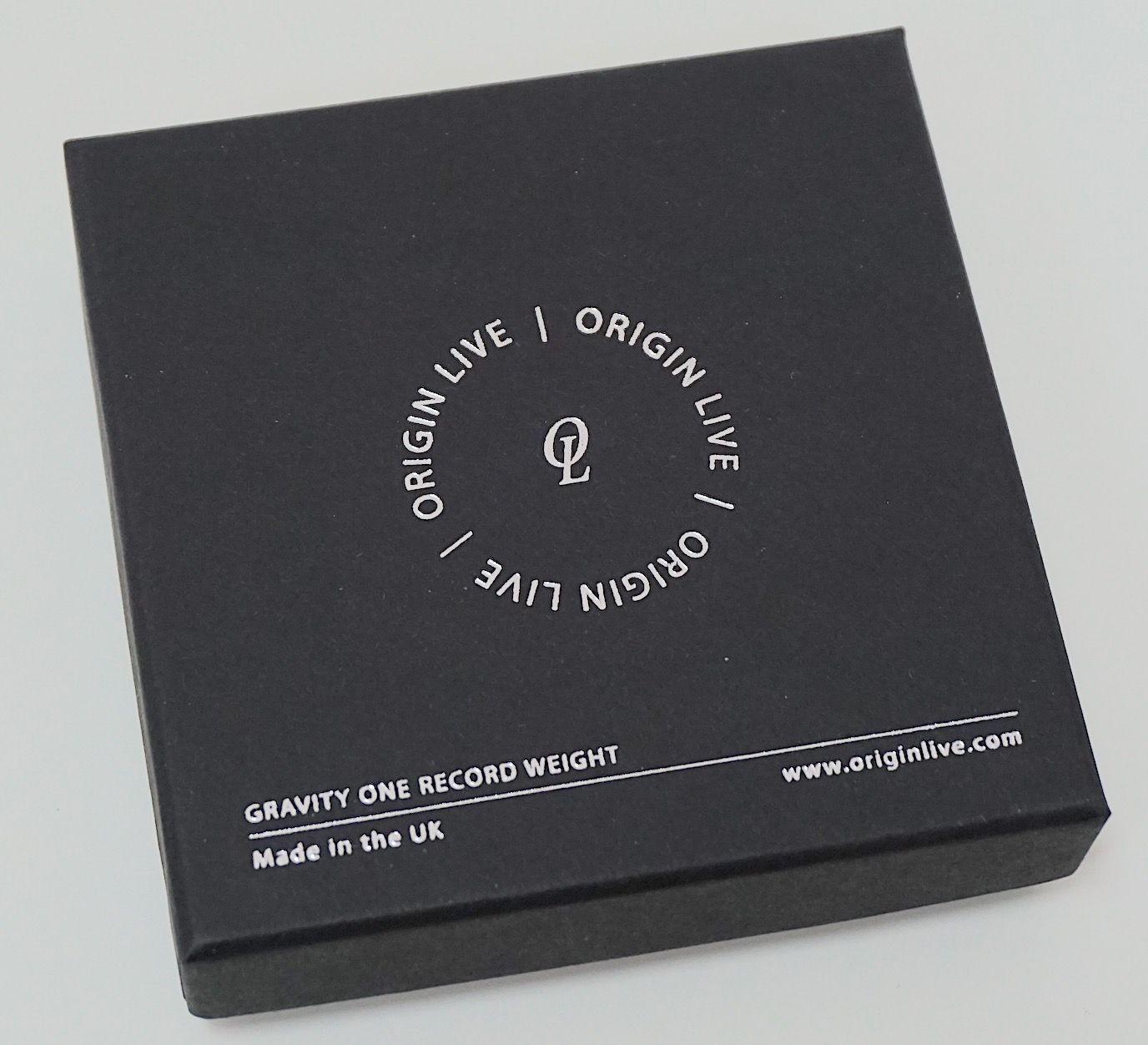
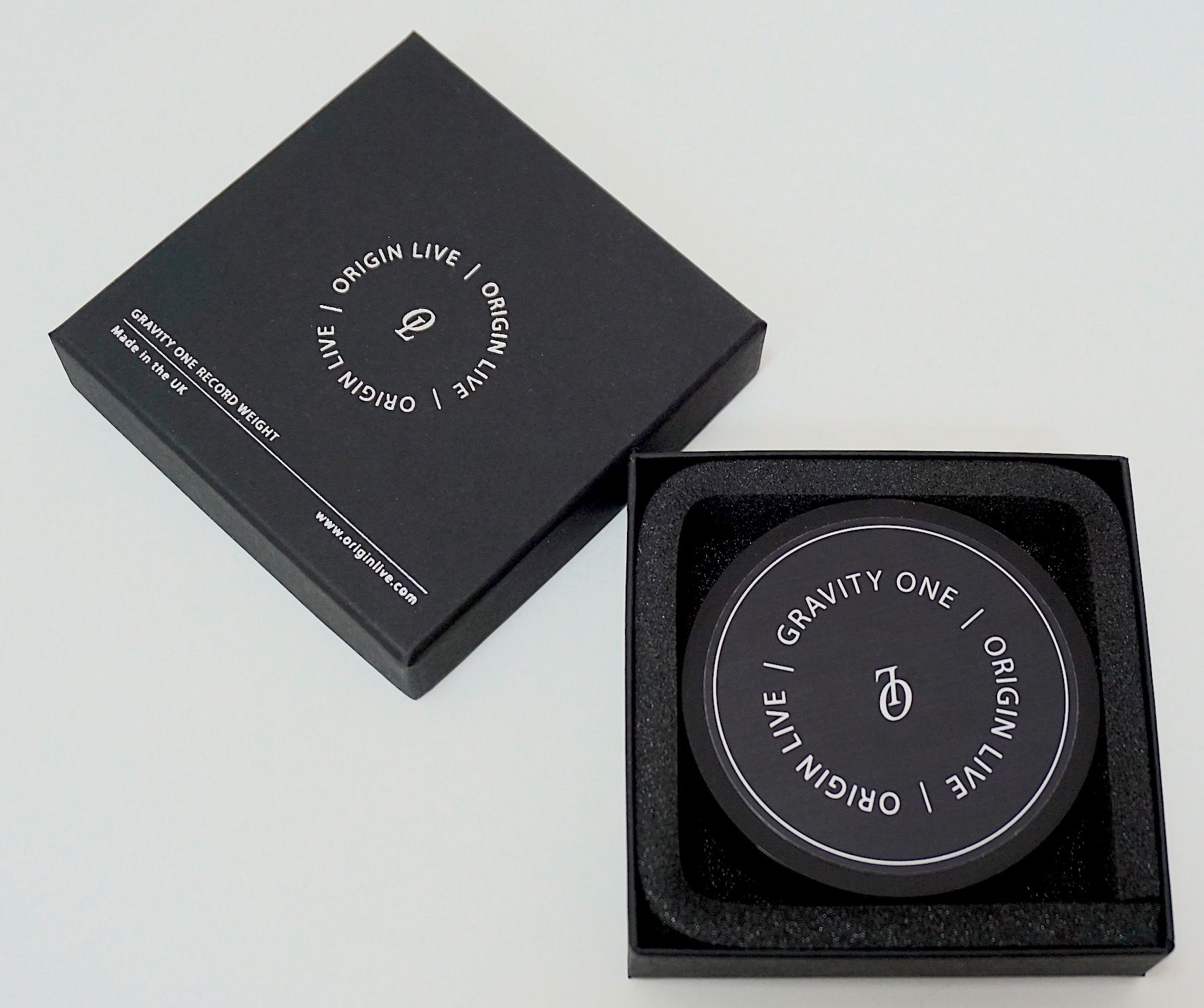
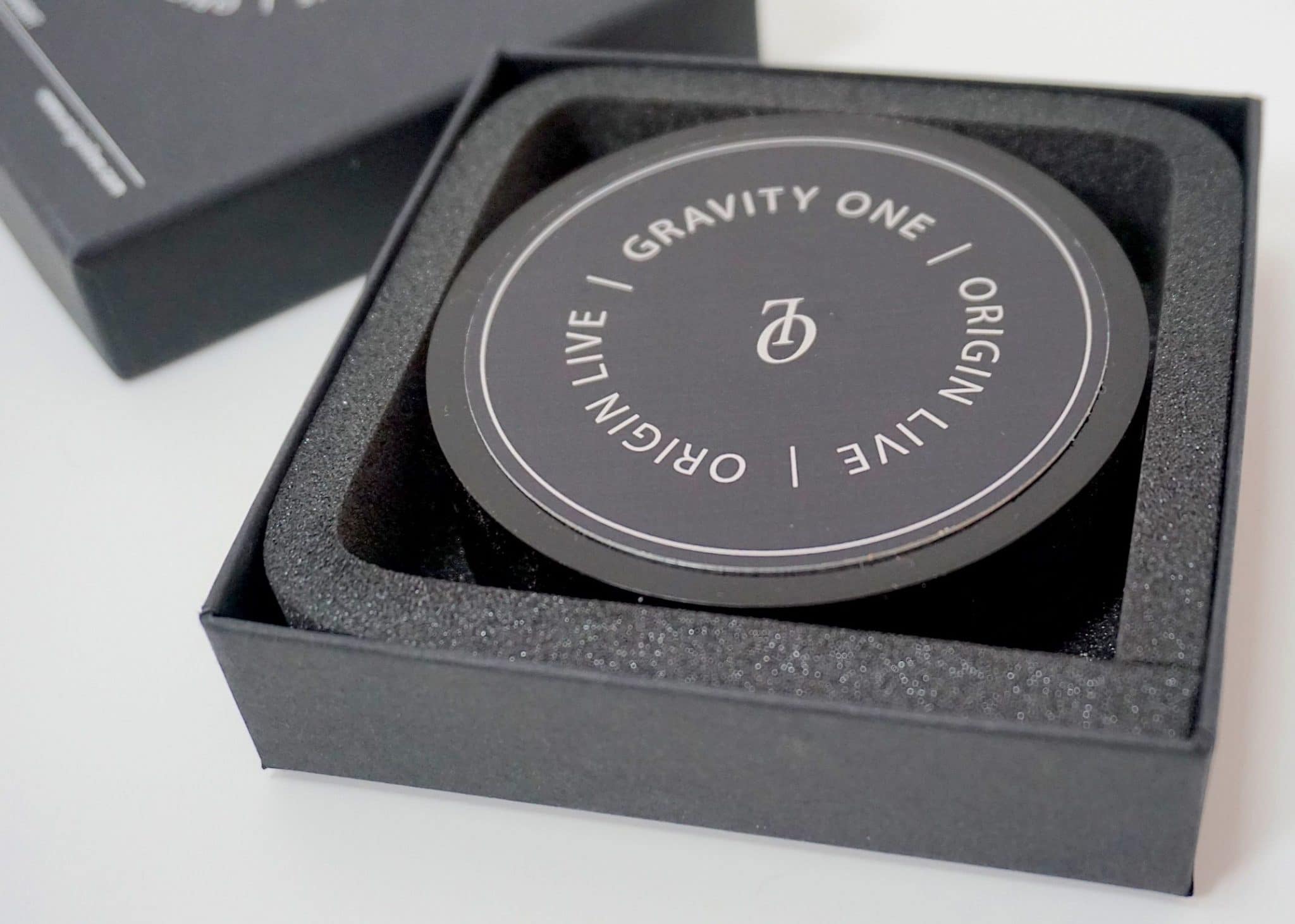
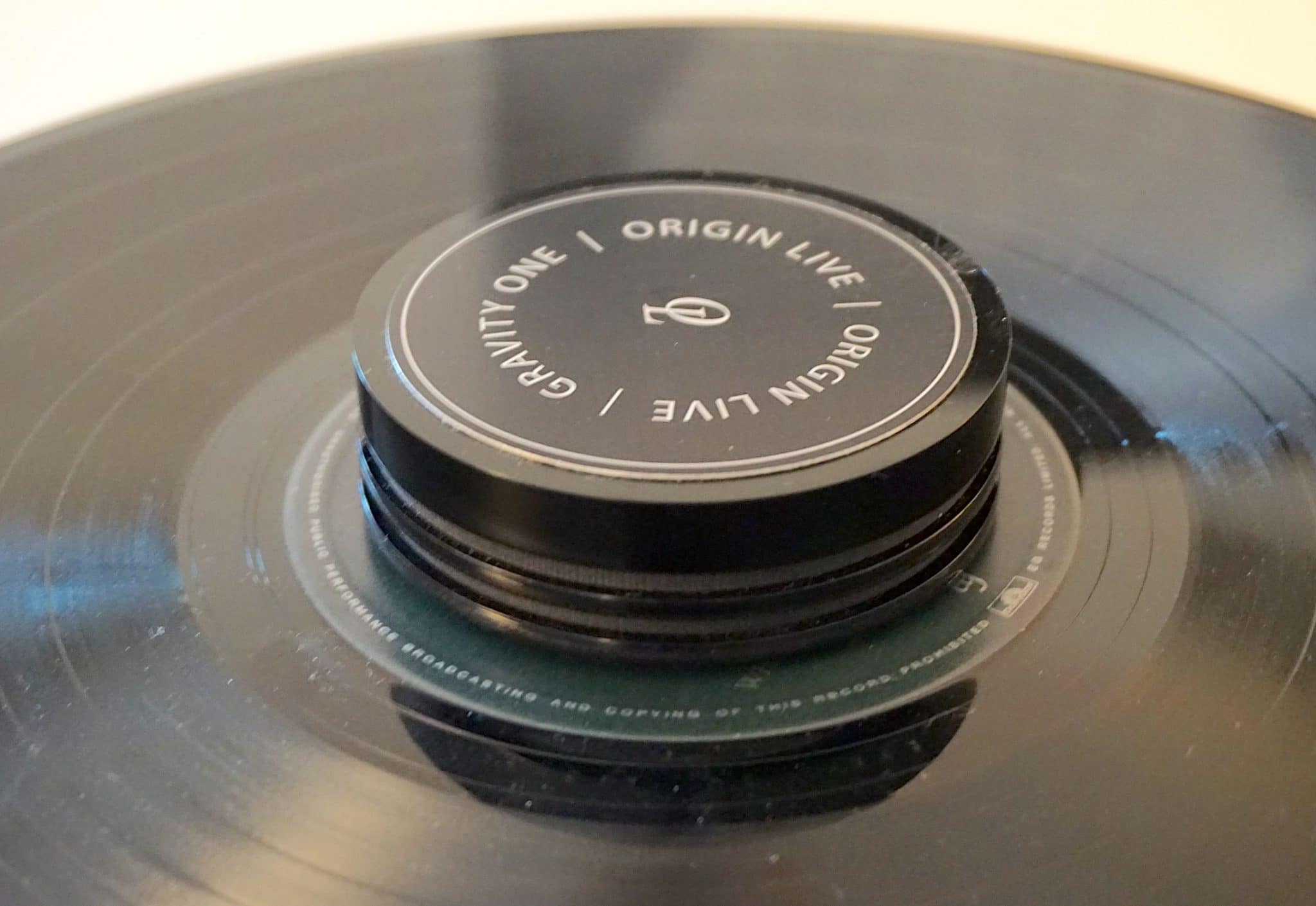
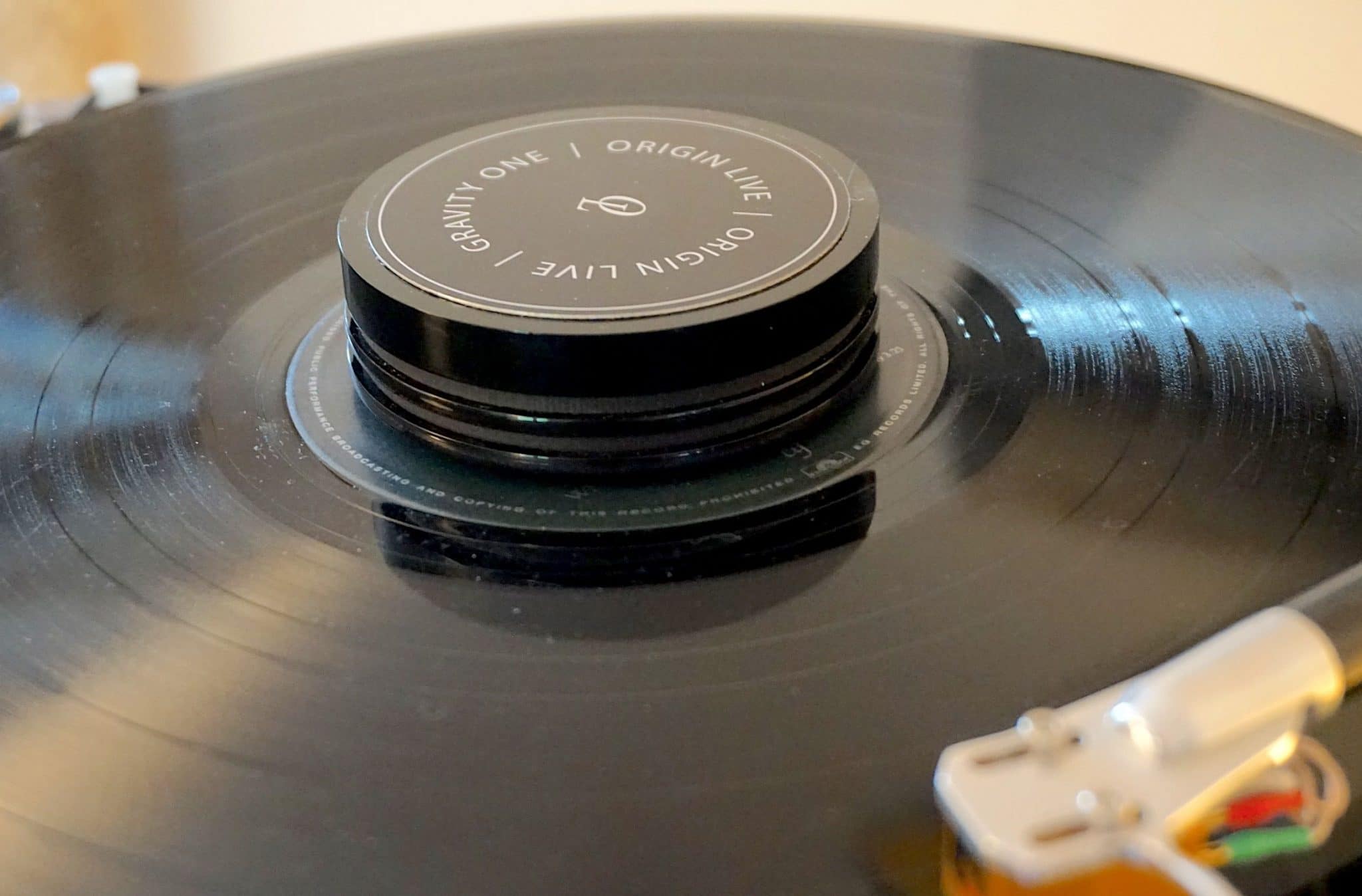
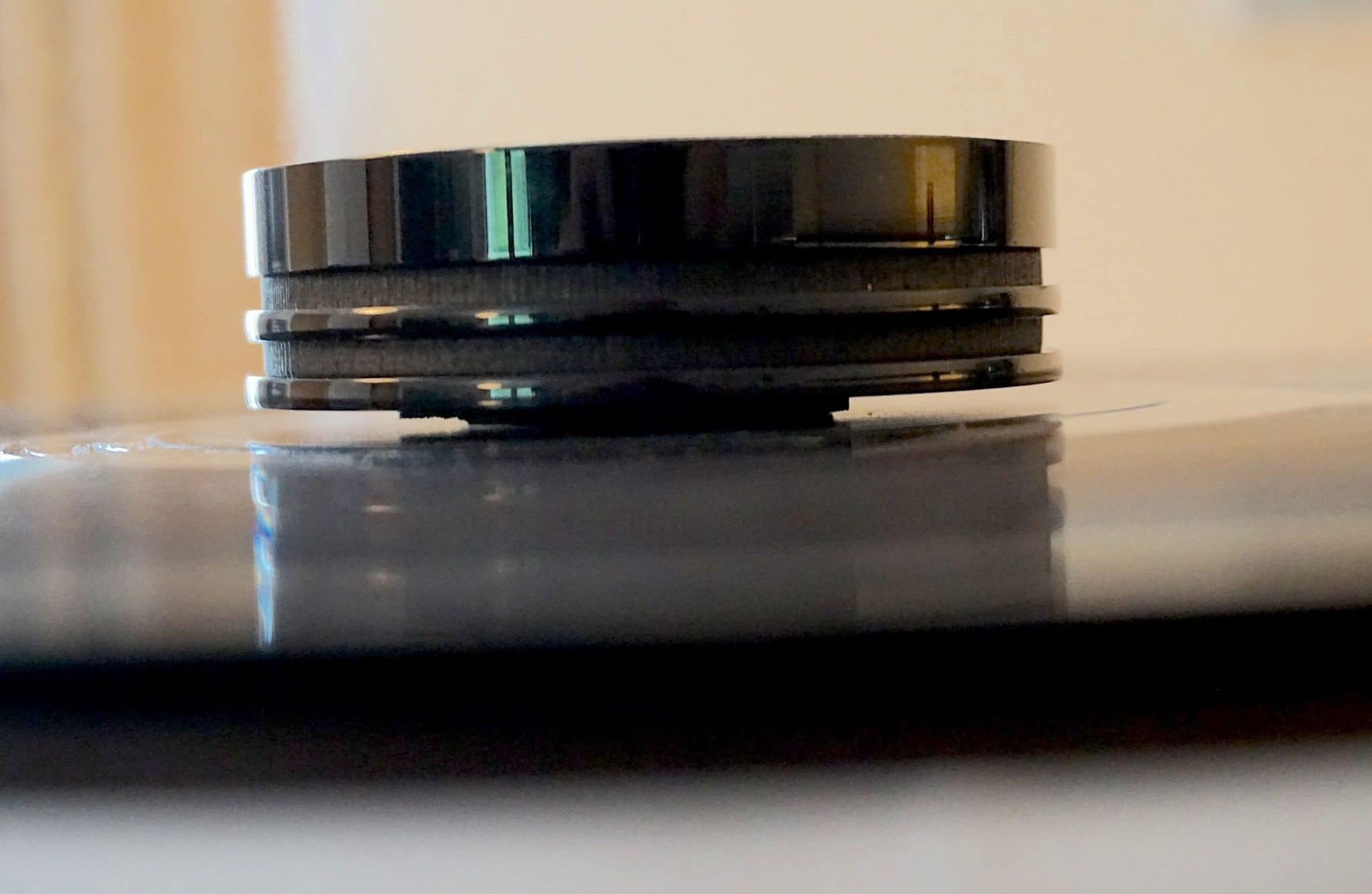
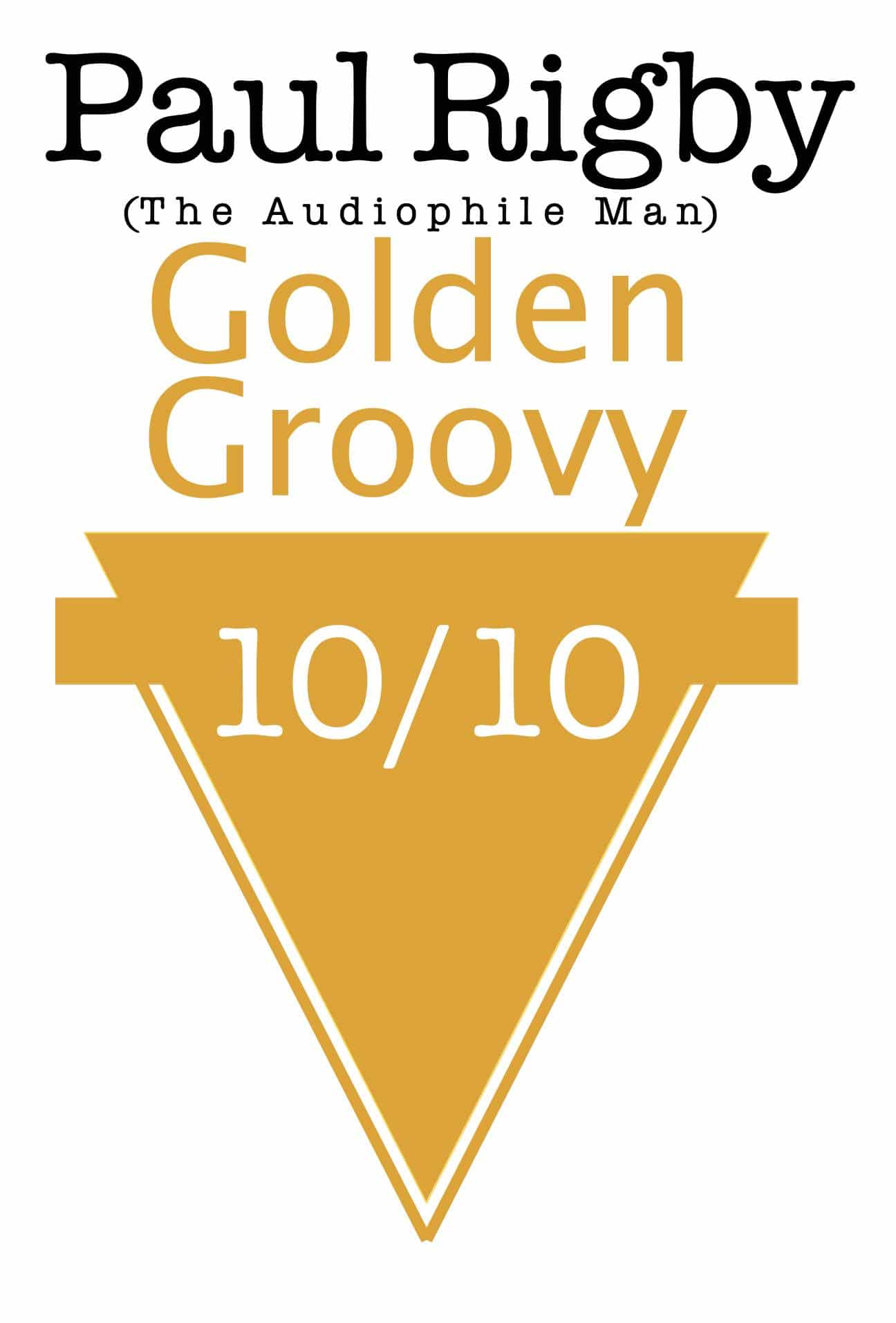


Hi Paul,
I really enjoy your utube reviews, the way you describe is just lovely,
!
Would you be reviewing the Funkfirm Houdini in the near future?
Lol
Jin
Thanks very much! I kinda did that in the Technics 1500C upgrade kit from Funk Firm.
Thanks, will read after this. Btw, I have the Houdini fixed to Hana ML on the older F5 tonarm onto the same years LSD.
From my hearing, most of the lps sound better; although from what I presume, with the Houdini, all lps should sound better since the cartridge is doing what it ought to– without interference !?
To cut it short, my favourite test lp which I know since 1972 is Elton Johns EJ, his second album.
Its for me a very good sounding album with good recording n lots of different Instruments and voices. Funnily, without the Houdini it sounded very good, also tested it with Sumiko Pearl, Ortofon Qunitet Black as well with 2MBlack and at last Hana ML.
Hana ML with Houdini sounded bad on the LSD, which I asked Arthur Koubesserian. He said he cant answer as he hasnt heard it himself due to lack of time; I understand he does many things all by himself in his firm.
Anyway, I will read your Technics upgrade kit first before anything else.
One last question; do you think the Origin Live Gravity One goes along with my set?
My set: Funkfirm LSD with Achromat , Boing feet and Houdini on F5 tonarm with Hana ML ?
As usual I do really enjoy your reviews either on Utube or in the internet.
Thank you very much and keep up with your good humour.
Lol
Jin
Thanks Jin and yes, the Gravity One is a good choice there.
thanks Paul, will get it next week.
Lol
Jin
What did you think of the Gravity 1? Did it live up to expectations?
Hi Brett,
all in all, there is a difference; funnily some lps, I hear differences yet others not much or none at all.
at least it gives me satisfaction that I m listening records with the G1.
Last night I was listening to Traffic with G1 and I thought Steve Winwoods voice was different!?
the lp Traffic-shoot out at the fantasy factory (i think) has very good recording.
what about your experience with the G1?
wbr
Jin
Thanks for another wonderful review Paul. Much appreciated as always.
Read so many positive reviews of this accessory I bit the bullet and ordered mine this morning. Have just been informed by Origin Live it will be delivered 1st Class Royal Mail tomorrow! Dam I’m excited… collecting Rega Aria too for home demo this weekend.
Thanks Brett – let me know how you get on.
Well, first impressions of the OLG1 are quite simply amazing! I will listen to reference vinyl over the next week or so and then remove the OLG1 to hear the difference. Looks damn fine on my Rega RP3 too!
Hi Brett – good news! Glad you like it 🙂
I am using a Living Voice Mystic Mat on my Nottingham Horizon SE turntable with the RB250 arm and an Ortofon 2M Bronze. After your review (here, and the video version) I am tempted, very tempted. I did take note of your mat reviews with it, but there wasn’t a comparison available with the Mystic Mat, or similar. I am wondering if I would have to replace the Mystic Mat, in your opinion